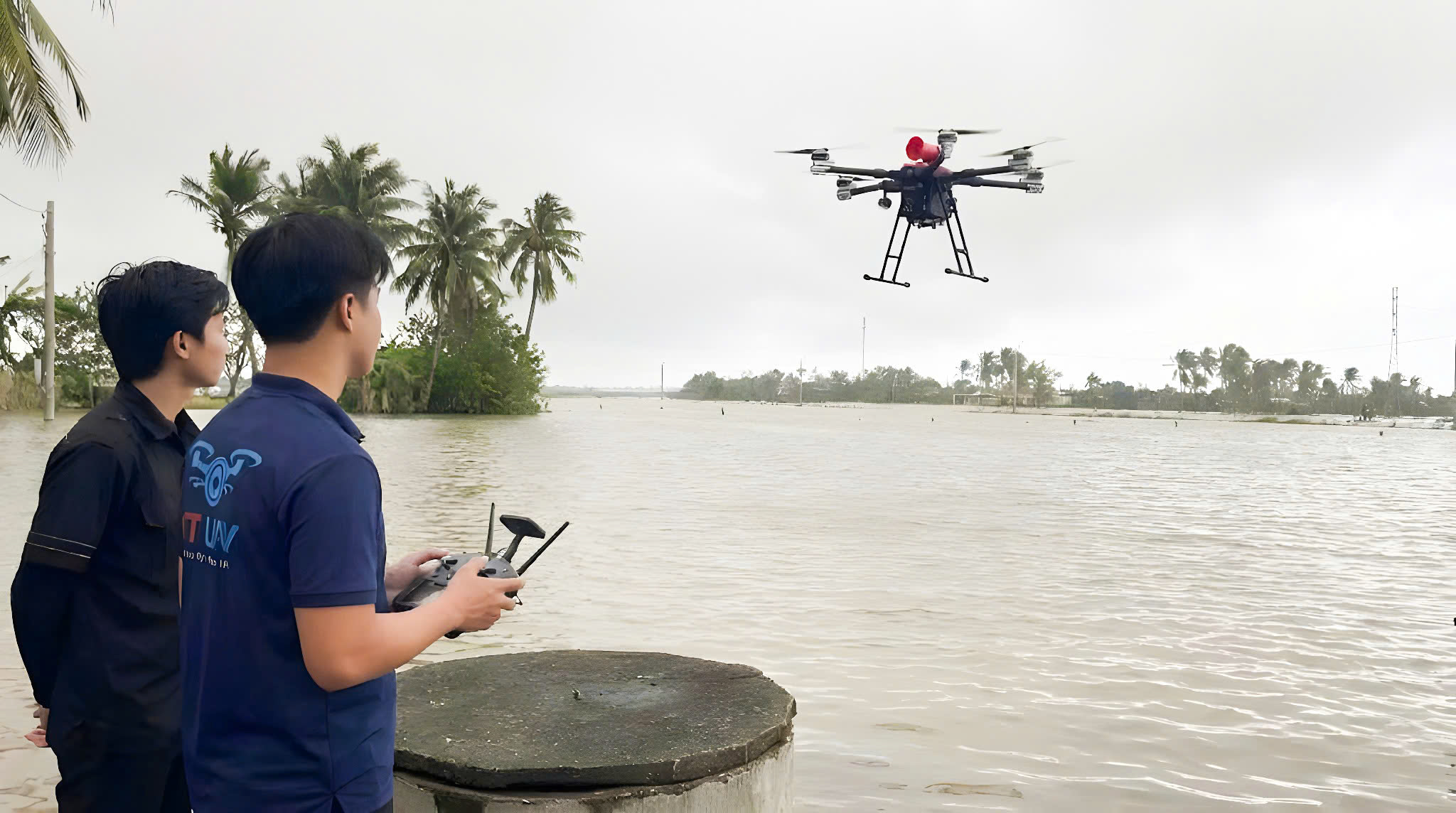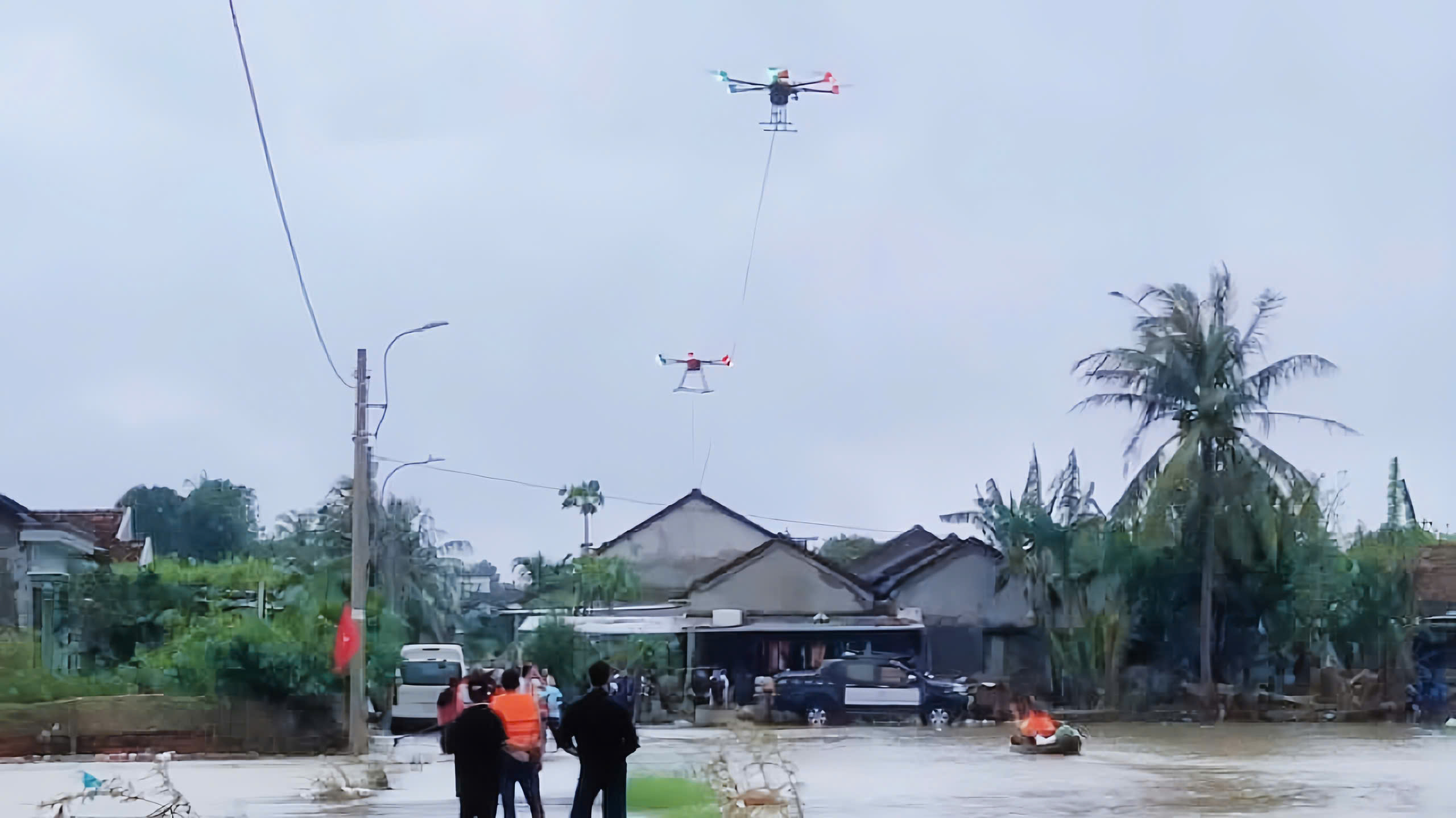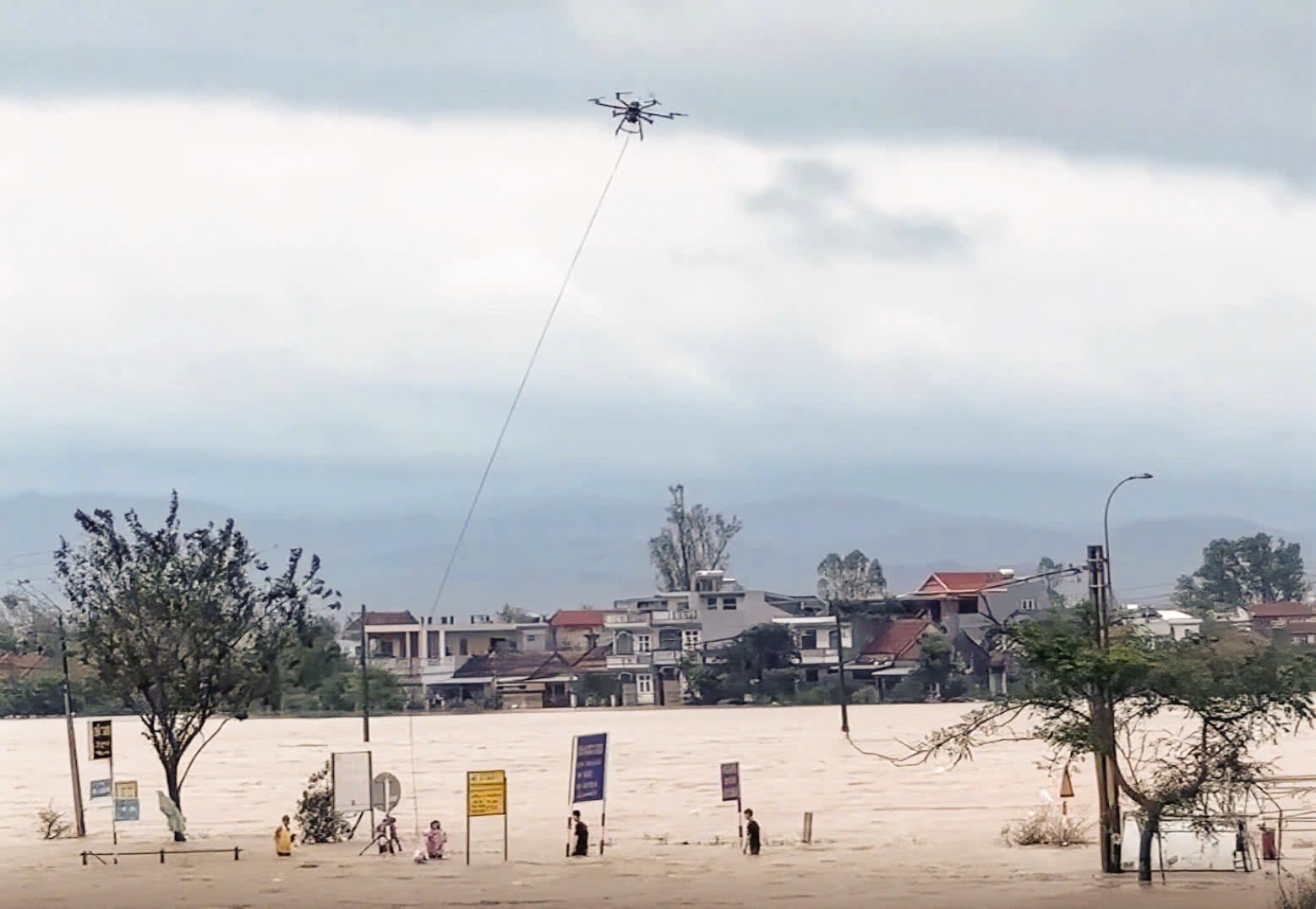On a storm-torn night, a snorkel-equipped off-road vehicle, with UAVs perched overhead, forced its way through the deep floodwaters on National Highway 1A, pressing into the South-Central region of Vietnam to reach residents stranded in severely inundated areas…
The floodwaters rose rapidly through the night, completely isolating many areas. Water surged above rooftops, there was no electricity, no water, phones ran out of battery with only one remaining way to reach them is by using UAVs.
Three UAVs flew continuously day and night, carrying life rings, ropes, drinking water, instant noodles, and milk. Stable even in strong winds and rain, the UAVs flew low over rooftops. Loudspeakers mounted on the UAVs broadcast continuous instructions to residents in distress. In a context where nearly all communication signals were lost, that voice was truly a warm hand in the biting cold.



Mr. Phan Van Han, Technical Support Director of CT UAV, led the team and spoke with deep emotion: “We only regret that we could not do more for the people. If only we could have developed in time UAVs capable of providing Wi-Fi and fast mobile charging, we could have supported residents in areas without signal, allowing them to contact their families and call for help in emergencies. Our team is working day and night to accelerate the development of next-generation UAVs specifically designed for disaster response – such as ultra-heavy-lift UAVs that can rescue many people, or national platforms integrating satellites, UAVs, and multimedia communications to provide early warnings of landslides, floods, earthquakes, epidemics, or traffic congestion… the losses to the nation and its people would be greatly reduced…”
“Another teammate of mine, Mr. Khang, unfortunately stepped on a nail while wading through the floodwaters. The wound was deep, yet he still pushed on to complete the day’s supply drops. He said the residents still needed us badly, and enduring a little more pain was nothing,” Mr. Han said.
“At the same time, CT Modulex – a unit within the CT Group technology ecosystem – is developing foldable, disaster-resilient houses. These are robotic houses that can quickly fold and unfold, generate their own electricity and water. They can float on water, be used as homes, field hospitals, or even emergency shelters in the heart of flood zones.
The relief team has traversed many deeply flooded villages and communes over the past days and is expected to return to Ho Chi Minh City on the night of November 26 after completing the final supply points. Most members are exhausted, yet no one mentions the hardship. What lingers most in their memories are the faces lighting up as they saw the UAVs descend, or a gentle nod, a wave of the hand like a silent thank you in the cold floodwaters.
